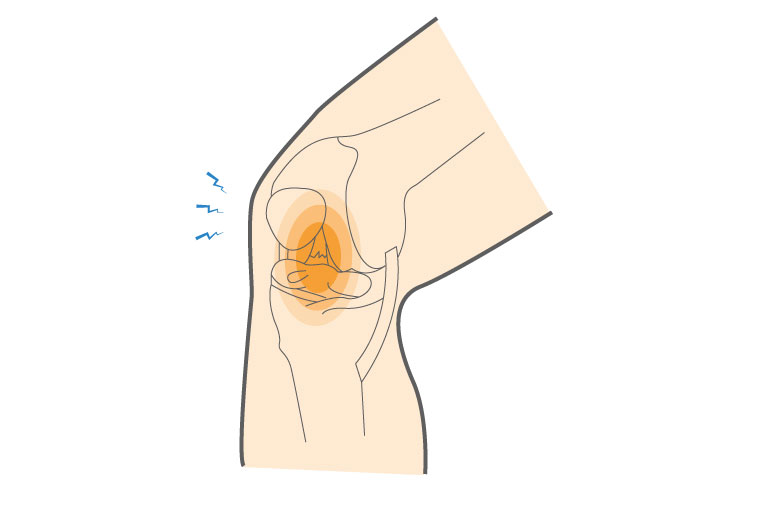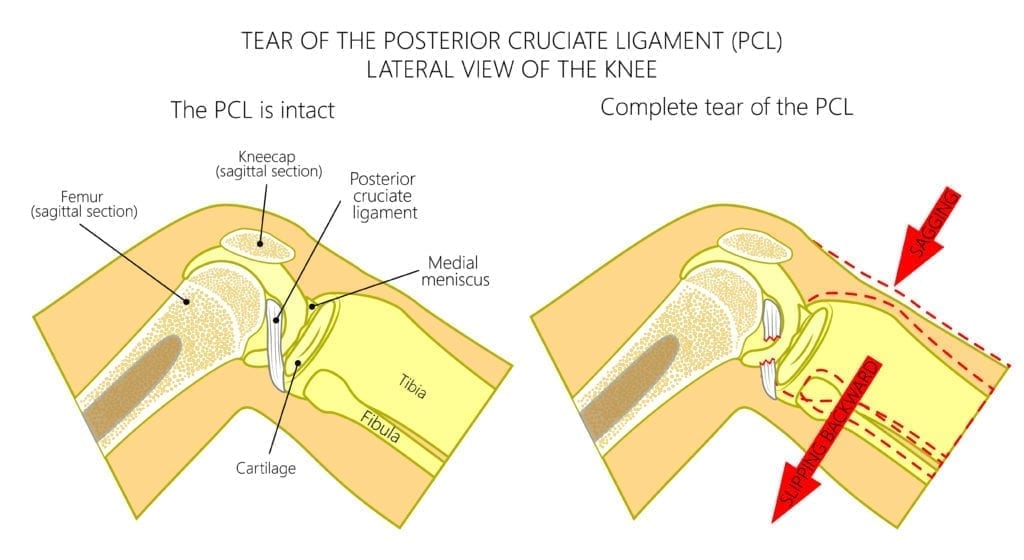The posterior cruciate ligament (PCL) is a strong ligament that runs through the center of the knee joint and connects the femur (thigh bone) to the tibia (shin bone). The PCL keeps the shinbone from moving backward after the leg has been straightened.
Because the posterior cruciate ligament is stronger than the anterior cruciate ligament, it is injured less often. A PCL tear often occurs alongside other knee injuries, like an ACL, MCL, or LCL tear. Generally, when a PCL tear occurs, it is partial, meaning that the tear does not go all the way through the ligament. Occasionally, the tear will go completely through the ligament. Partial tears are able to heal on their own, while complete tears may need surgical repair.



